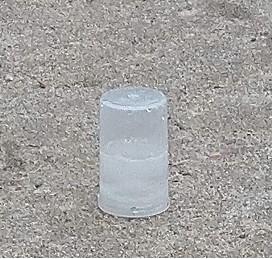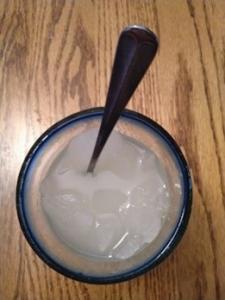

It's Colorado Springs 150th birthday this month! 150 years is a sesquicentennial birthday. To celebrate, PPLD children's staff gathered some great historical fiction for kids. The books touch on several different times and places in the history of our country. Click on the pdf link below to see the booklist.

Take and Makes for this project will be available at area PPLD libraries beginning this Friday, July 9, 2021. Watch this project at: https://www.youtube.com/watch?v=n_g0THNq4WI
Film Canister Rockets propel with a strong force. Please provide adult supervision and stand back about 6 feet as the canister flies. Personal safety goggles are recommended. This project is best done outside as the rocket may fly over 20 feet into the air! In addition, the “Alka-Seltzer” used for propulsion could be harmful if ingested.
Supplies and Directions:
Materials provided: film canister, Alka-Seltzer tablets
Materials you provide: water
Procedure:
- Put on your safety goggles and head outside with your materials. (If you must do this inside, do not turn the canister upside down in step 5.)
- Break an Alka-Seltzer tablet in thirds.
- Fill your canister a third full of water.
- Quickly drop an Alka-Seltzer piece into your water and snap on the lid.
- Continuing to work quickly, turn the film canister upside down and place it on the ground. Step back 6 feet.
- In about 10 seconds, you will hear a pop and watch your canister fly!
- If the canister hasn’t launched in about a minute, you may have a leak. Look around your area for evidence of a leak. Pick up the canister while aiming it away from you to empty it and try again.
- If your canister doesn’t launch or doesn’t fly far, try some of the experiments listed below.
The science behind this:
When you combine the Alka-Seltzer tablet and the water, they produce carbon dioxide. Pressure builds up inside the canister as the gas is released. The gas builds until the lid is blasted down and the canister is propelled upwards. Real rockets use rocket fuel to produce thrust in a similar way. If you’d like, you can create fins and a cone out of paper to control your rocket’s path.
Extensions: Experiment with the following:
- Does water temperature affect either timing or height of the propulsion?
- How does the size of the tablet piece affect the time it takes for the rocket to launch?
- How do your paper fins & cone affect the rocket’s path?
- What amount of water gives your rocket its highest flight?
- What amount of water gives your rocket tis quickest launch?

Lemonade slushies are a great way to beat the summer heat! There's little to no mess. They're fun for all ages and you get slushy goodness.
Take and Makes for this family project will be available at area PPLD libraries beginning Friday, July 2, 2021.
Supplies and Directions:
Materials provided in the Take and Make kit: 1-gallon Ziploc, 1-quart Ziploc, 2 lemonade packets.
Materials you provide at home: water, salt, ice, spoon, cup (optional), towel (optional)
- Place ice cubes and salt in the gallon sized Ziploc bag. Start with 15-20 ice cubes and 1-2 tablespoons salt.
- Mix HALF of a lemonade powder packet and 8-10 ounces of water in the quart-sized Ziploc. Remove as much excess air as possible and seal the bag.
- Place the bag with lemonade into the bag of ice and salt. Seal the large Ziploc.
- Shake or knead the bags for about 5 minutes until your lemonade has become a slushy. If the bags get too cold, wrap them in a towel.
- Carefully remove the lemonade bag from the larger bag. You don't want to get salt in your lemonade. Pour it into a cup to eat it or eat it right out of the bag.
Tips:
If it seems to be taking too long, add more salt and ice.
Other beverages also work, so experiment to find your favorite.


